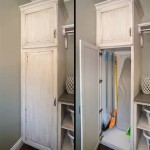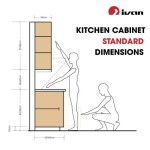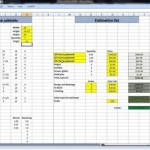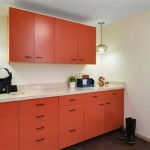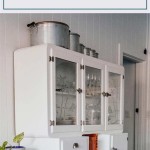Plate Rack Solutions for Optimized Kitchen Cabinet Storage
The kitchen, often considered the heart of the home, requires efficient organization to facilitate seamless meal preparation and maintain a tidy environment. Optimizing cabinet space is a crucial aspect of kitchen organization, and plate racks can play a significant role in achieving this goal. Plate racks designed for kitchen cabinets offer a dedicated storage solution for plates, preventing stacking that can lead to chipping or breakage and improving accessibility. This article explores the various types of plate racks available for kitchen cabinets, their benefits, considerations for selection, and installation methods.
Types of Plate Racks for Kitchen Cabinets
The market offers a diverse range of plate racks designed to suit various cabinet configurations and storage needs. Understanding the different types available is essential for selecting the most appropriate option for a specific kitchen. These racks can be broadly categorized based on their mounting style and material composition.
One prevalent type is the freestanding plate rack. These racks do not require any permanent installation and can be placed directly inside a cabinet. They offer flexibility as they can be moved and repositioned as needed. Freestanding racks are typically constructed from metal, wood, or plastic-coated wire, each offering varying degrees of durability and aesthetic appeal. Metal racks, often made of chrome or stainless steel, are resistant to rust and easy to clean. Wooden racks offer a more traditional or rustic aesthetic, while plastic-coated wire racks are a cost-effective and lightweight option.
Another common type is the wall-mounted plate rack. Although technically mounted to the cabinet's interior wall rather than simply placed inside, these racks provide a secure and stable storage solution. They are typically constructed from metal and are attached using screws or other fasteners. Wall-mounted racks are particularly useful for storing heavier plates or for maximizing vertical space within a cabinet. They prevent the rack from shifting or tipping over, ensuring the plates remain securely in place.
Pull-out plate racks represent a more sophisticated storage solution. These racks are mounted on sliding mechanisms, allowing them to be easily pulled out of the cabinet for convenient access to the plates. Pull-out racks are typically made of metal and are designed to hold a significant number of plates. They are particularly beneficial for individuals with limited reach or mobility, as they eliminate the need to reach deep into the cabinet. These racks often incorporate features such as adjustable dividers or non-slip surfaces to further enhance their functionality.
Finally, tiered plate racks offer a space-saving solution by stacking plates vertically. These racks typically consist of multiple shelves or tiers, each designed to hold a different size of plate. Tiered racks are a good option for smaller cabinets or for individuals who want to maximize the storage capacity of their kitchen. They are available in various materials, including metal, wood, and plastic, and can be either freestanding or mounted to the cabinet interior.
Benefits of Using Plate Racks in Kitchen Cabinets
Implementing plate racks within kitchen cabinets yields numerous benefits, contributing to improved organization, protection of dishware, and enhanced kitchen functionality. These benefits extend beyond mere aesthetic improvements and directly impact the usability and longevity of kitchen essentials.
One primary benefit is the prevention of plate breakage. When plates are stacked directly on top of each other without any separation, they are more susceptible to chipping, scratching, and breakage. Plate racks provide individual slots or compartments for each plate, preventing them from rubbing against each other. This reduces the risk of damage and extends the lifespan of the dishware. The structured support offered by the rack distributes weight evenly, minimizing stress on individual plates, especially those made from more delicate materials like fine china.
Another significant advantage is the improvement of kitchen organization. Plate racks create a designated space for plates, preventing them from being scattered throughout the cabinet. This makes it easier to find the desired plate and streamlines the process of setting the table or unloading the dishwasher. The organized arrangement contributes to a more visually appealing and functional kitchen environment. A well-organized cabinet also reduces clutter and promotes a sense of calm within the kitchen space.
Enhanced access to plates is also a key benefit. Plate racks allow for easy retrieval of plates without having to lift or shift other items. This is particularly useful for individuals with limited strength or mobility. Pull-out plate racks, in particular, provide effortless access to the entire collection of plates, eliminating the need to reach into the back of the cabinet. The improved accessibility makes it easier to prepare meals and clean up afterwards.
Furthermore, plate racks can maximize cabinet space. By storing plates vertically or in a tiered arrangement, they utilize space more efficiently than simply stacking plates horizontally. This can be particularly beneficial in smaller kitchens where cabinet space is limited. The optimized use of space allows for the storage of other kitchen essentials, such as bowls, serving dishes, or glassware. The increased storage capacity contributes to a more organized and functional kitchen overall.
Considerations When Selecting a Plate Rack
Choosing the right plate rack for kitchen cabinets requires careful consideration of several factors. Selecting a rack that aligns with the specific needs and requirements of the kitchen is paramount to achieving optimal storage and organization. Factors to consider include cabinet dimensions, plate size, weight capacity, material quality, and aesthetic preferences.
One crucial factor is the dimensions of the cabinet. Before purchasing a plate rack, it is essential to measure the interior dimensions of the cabinet to ensure that the rack will fit properly. Consider both the width, depth, and height of the cabinet. Choose a rack that leaves sufficient clearance around the sides and top to allow for easy access to the plates. For pull-out racks, ensure that there is enough space for the rack to fully extend without hitting any obstructions. An ill-fitting rack can be difficult to install and may not function properly.
The size and number of plates that will be stored on the rack are also important considerations. Select a rack that is designed to accommodate the specific size of plates being stored. Smaller racks may be suitable for storing salad plates or dessert plates, while larger racks are necessary for dinner plates or serving platters. Consider the number of plates that need to be stored and choose a rack with sufficient capacity. Overloading a rack can compromise its stability and potentially lead to damage. The spacing between the slots or tiers should also be adequate to prevent plates from rubbing against each other.
The weight capacity of the plate rack is another critical factor to consider. Different materials and designs have different weight capacities. Choose a rack that is capable of supporting the weight of the plates without bending or collapsing. Metal racks typically have a higher weight capacity than wooden or plastic racks. If storing heavy stoneware or china plates, opt for a rack that is specifically designed for heavy-duty use. Exceeding the weight capacity of the rack can be dangerous and may result in damage to the plates or the cabinet.
Material quality and durability should also be considered. Select a rack that is made from high-quality materials that are resistant to rust, corrosion, and warping. Metal racks made of stainless steel or chrome are durable and easy to clean. Wooden racks should be treated with a sealant to protect them from moisture damage. Plastic racks should be made of sturdy, food-grade plastic that is free of harmful chemicals. The overall construction of the rack should be solid and well-built to ensure its longevity.
Finally, aesthetic preferences should be taken into account. Choose a plate rack that complements the style and decor of the kitchen. Racks are available in a variety of finishes and materials, including stainless steel, chrome, wood, and plastic. Consider the color and style of the cabinets and select a rack that blends in seamlessly. The goal is to choose a rack that is both functional and aesthetically pleasing, enhancing the overall look of the kitchen.
By carefully considering these factors, individuals can select a plate rack that meets their specific needs and enhances the organization and functionality of their kitchen cabinets.

Pin On New House

Diy Inside Cabinet Plate Rack Remodelando La Casa

13 Ways To Add A Plate Rack Your Kitchen

Solid Wood Oak Plate Rack Kitchen Racks Cabinets

13 Ways To Add A Plate Rack Your Kitchen

43 Best Kitchen Drying Cabinet Ideas Dish Rack Racks

Bringing Back A Classic 25 Trendy Ways To Add Plate Rack Decoist

Add Plate Racks To Your Kitchen Cabinets Premium

Kitchen Storage Rack Stainless Steel Dish Holder China Drip Racks And Made In Com

13 Ways To Add A Plate Rack Your Kitchen
Related Posts


